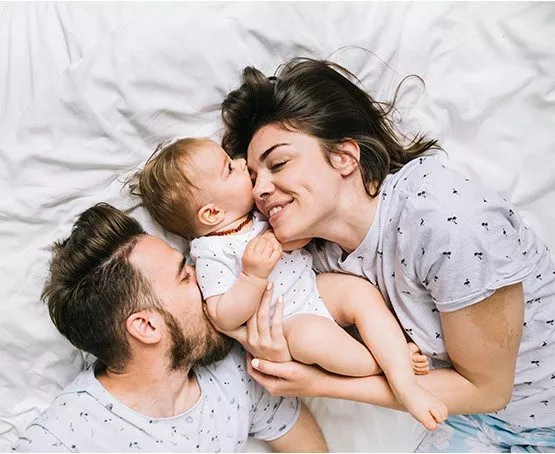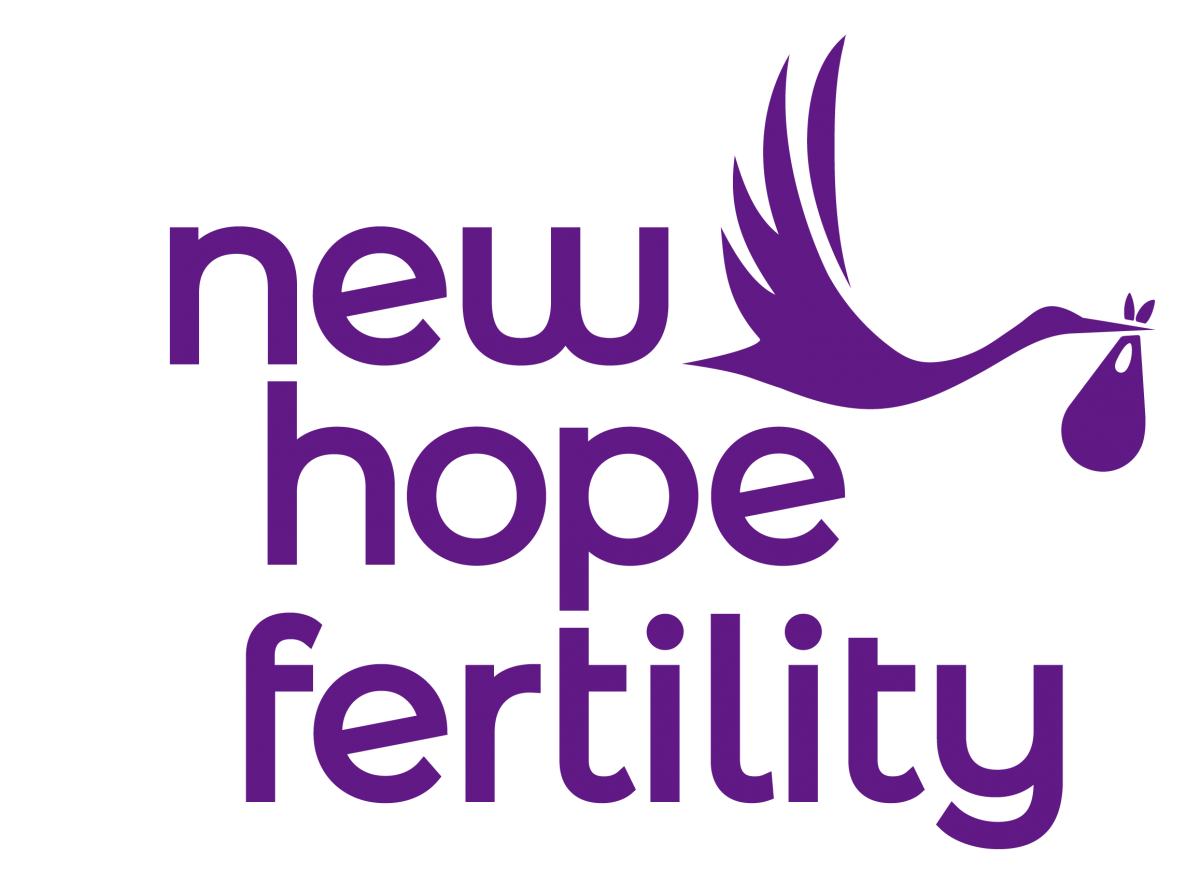
MF
My experience with New Hope was encouraging, respectful, relatively affordable and aptly “hopeful” from the very beginning. I gave birth to my first child at the “advanced maternal age” of 39 – a term New Hope, to their credit, never employed! William was conceived naturally and born after 36 hours of labor and a caesarian section in 2008. He was a healthy baby, but developed a strange rash around his eyes at about 8 weeks of age. After visiting several pediatricians and finally a special dermatologist, it was determined that he had neo-natal lupus – a rare condition whereby the mother passes on autoimmune antibodies to the fetus. It can result in a benign butterfly rash on the infant or, more seriously, in a partial or complete heart block. This normally occurs in utero, but we decided to take William to a pediatric cardiologist for an electrocardiogram, just in case. Fortunately his heart was functioning perfectly and the rash cleared at around six months of age, when my antibodies dissipated from William’s bloodstream.
Prior to William’s birth I had no indication of an autoimmune disease, but after engaging a rheumatologist and undergoing several blood tests it was determined that I have Sjogren’s Syndrome – a condition that affects one’s mucus membranes and can cause rheumatoid conditions, and occasionally organ damage. I am relatively asymptomatic most days, with dry eyes and slightly arthritic ankles, wrists and fingers during times when my body/mind is out of balance. However, the discovery of this condition meant that future pregnancies could be complicated by a heart block, which can occur any time from 16 weeks to 36 weeks. The pregnancy would have to be carefully monitored with fetal electrocardiograms performed weekly throughout. If a heart block is discovered, steroids can be administered to the mother in an effort to mitigate the condition. Failing that, a pacemaker can be installed in utero. However, fetal death is unfortunately a likely reality. Because William developed the neo-natal lupus rash, our second child was statistically more inclined to develop heart block.

Despite this risk, my husband and I decided to try to have another child. Two years and three miscarriages later – one of which was at 18 weeks gestation – we decided to seek help. Our primary objective was to avoid future miscarriages. We approached a well-known clinic in Connecticut which counseled us to go through IVF in order to garner enough embryos to subject to Pre-implantation Genetic Diagnosis (PGD) testing, which was originally developed to screen for specific genetic diseases – but is now also used to screen an embryo’s chromosomes for abnormalities that could lead to miscarriage.
This clinic’s approach to IVF was very aggressive in terms of the fertility drugs administered and anesthesia used when the eggs were retrieved. My body rebelled against this onslaught of hormones and medication with its usual autoimmune response – as well as a general feeling of ill health. I underwent two cycles of IVF with this clinic – which produced a quantity of blastocysts, but no decisively “normal” embryos (the results of several returned indeterminate, for whatever reason). After this disappointing and very expensive exercise I decided to visit my naturopath, Dr. Jeanne Fuqua N.D. for acupuncture and supplements to support my reproductive system and urge my body back into a semblance of balance while we decided what to do next. She suggested that we try New Hope as several of her clients had had success with their unique and less-invasive approach.

My husband and I arranged a consultation with our doctor straight away. He grasped our situation immediately – intelligently and creatively thinking “outside the box” when designing a protocol for me to follow. Taking all factors into account, he felt that my miscarriages were “unexplained” – I was producing a good quantity of quality blastocysts which indicates that my egg supply was healthy, but miscarrying nonetheless. While New Hope was not in the practice of using PGD to prevent miscarriage, Dr. Zhang supported the procedure in my case.
We planned to undergo three rounds of fertility treatments, using external monitoring, after which we hoped we would have enough embryos to send for PGD testing. The experience was vastly different from the clinic we had used previously. The protocol coincided with my natural cycle and used the fewest drugs possible to produce the desired result. The egg retrieval was equally distinctive in that no anesthesia was used. New Hope has developed a catheter so fine that it can be utilized with minimal discomfort to the patient. Although I had several eggs to extract each cycle, the degree of pain I experienced was manageable. The Valium administered prior to the procedure, while reclining in a comfortable chair watching the Food Channel was helpful, as was the treatment room – which was darkened, with calming music softly playing. There was a screen on which I could view each egg being extracted, but I preferred to shut my eyes and concentrate on my breath. The doctor instructed me when to inhale, hold my breath and exhale during each extraction, which was a useful technique for pain management.

Fortunately after three cycles, we had enough blastocyst embryos to send for PGD testing. The wait was anxiety-ridden, but we were delighted to learn that we had produced two healthy embryos. One unfortunately didn’t survive the freeze/thaw process, so we had just one to implant. The results were returned late in the day – but Dr. Chang encouraged us to drive to the city immediately. The implantation was painless (I watched the screen that time) and after the requisite amount of recovery in the comfortable chair enjoying the Food Network, I was free to gingerly make my way by taxi to our hotel. Because this embryo was so precious I naturally did everything possible to keep it in place – lying with my hips on a cushion and my legs up the wall for several hours. This, I was assured, was not necessary – but making that effort made me feel more comfortable and in control.
I am delighted to report that the pregnancy proceeded relatively normally and although “high risk” due to the autoimmune disorder and placenta previa – I successfully delivered Edward three weeks early by cesarean section on December 28th, 2011, at Yale New Haven hospital. Without New Hope I do not believe that Edward would have been possible and I owe the New Hope team, and Dr. Fuqua for recommending them, my deepest gratitude. I now encourage anyone I encounter with fertility or miscarriage issues to consider the alternative and successful approach of New Hope – wholeheartedly, enthusiastically and without reservation.
